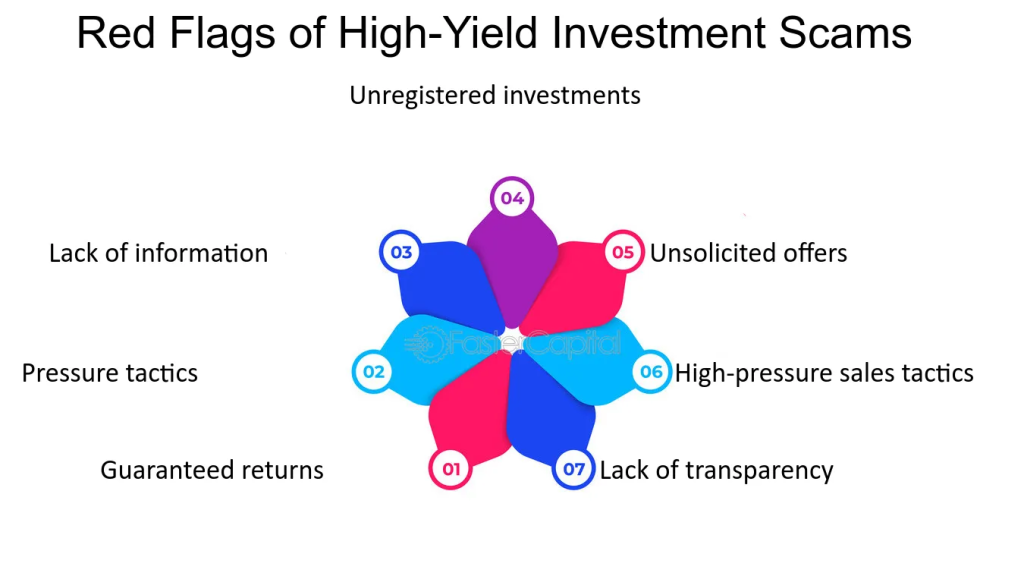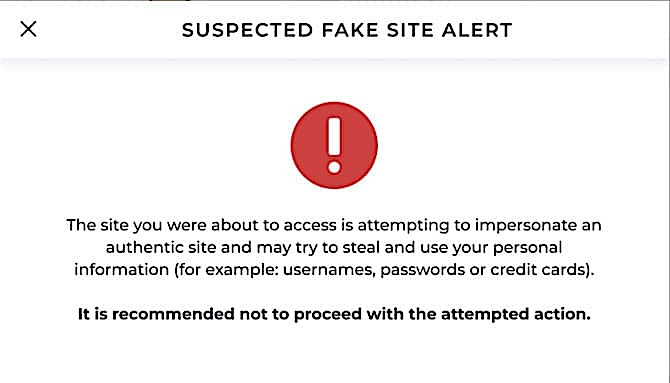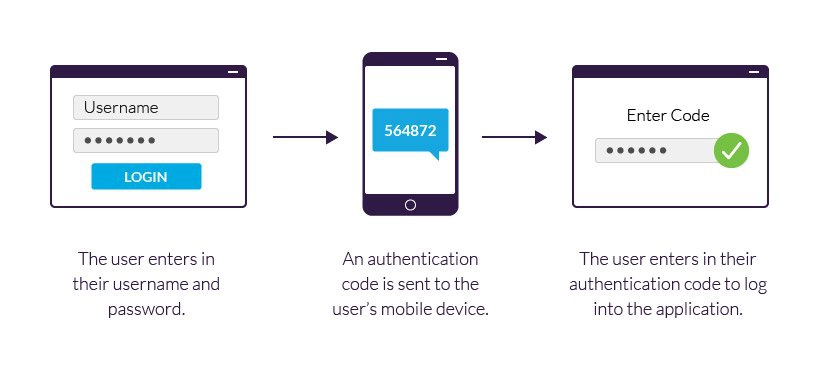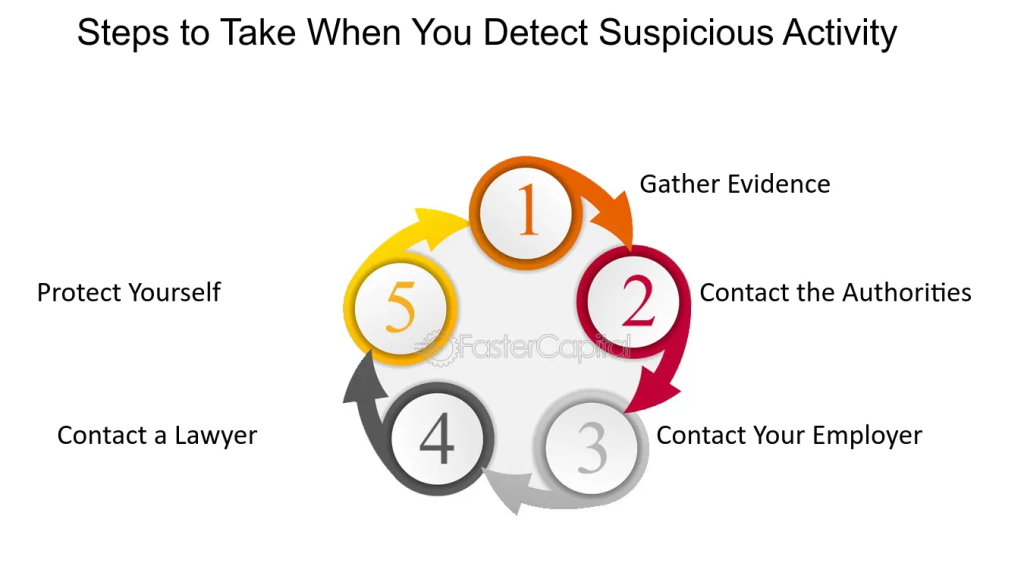Local: Recognizing and Preventing Financial Scams and Fraud
Objetivos de aprendizaje de la lección:
Introducción: This section focuses on recognizing and preventing financial scams and fraud, a crucial skill for maintaining financial security. By understanding the risks of scams and implementing proactive measures, users can better protect their personal information and finances.
- Identify common financial scams such as phishing, Ponzi schemes, and greenwashing. This understanding helps you avoid falling victim to deceptive tactics used to steal money or personal data.
- Understand how to protect personal information, including passwords and financial data, to prevent identity theft and fraud. You’ll learn steps like using two-factor authentication and regularly updating security settings, which will help safeguard your accounts.
- Learn how to respond to fraud attempts by recognizing warning signs, reporting suspicious activity, and taking immediate action, such as blocking accounts and contacting authorities. This knowledge empowers you to manage potential risks effectively.
- Discover tools for staying informed about the latest fraud tactics. Knowing where to find updated scam alerts from regulatory bodies helps you avoid evolving fraud schemes.
- Apply effective debt management strategies, like the debt avalanche or snowball methods, to maintain control of your finances and prevent debt-related vulnerabilities that scammers might exploit.
Introducción
Effectively managing debt and credit is critical for maintaining financial health and avoiding the pitfalls of financial scams and fraud. This chapter provides insights into the risks associated with financial scams, how to recognize fraudulent schemes, and the importance of securing personal information in an increasingly digital world. It also explores various payment methods and the potential impact they can have on debt accumulation. Additionally, practical strategies for managing debt—such as the debt avalanche and snowball methods—are discussed, along with tools for recovering from debt and rebuilding credit. By understanding the risks of financial fraud and using proactive debt management techniques, individuals can navigate credit challenges with confidence.
Understanding the Risks of Financial Scams and Fraud
In today’s digital world, financial scams and fraud are increasingly prevalent, and individuals must be vigilant when choosing and using financial services. Financial scams often involve fraudulent investment schemes, deceptive financial products, or phishing attempts aimed at stealing personal information. Fraudsters may use various methods, such as fake websites, emails, or even impersonating representatives from financial institutions, to deceive individuals into providing sensitive information or transferring money.
It is essential to understand the potential risks and be proactive in recognizing the signs of fraudulent activity. For example, offers that seem too good to be true—such as guaranteed high returns with little to no risk—are often red flags for fraudulent investment schemes.
Recognizing Fraudulent Investment Schemes
Many financial scams involve fraudulent investment schemes that promise unrealistic returns or use complex jargon to confuse potential investors. Ponzi schemes, pyramid schemes, and other forms of financial fraud are common, and it is important to be aware of their tactics.
- Ponzi schemes: These scams promise high returns by paying earlier investors with the funds from new investors rather than from legitimate business activities.
- Greenwashing: In the context of investments, greenwashing refers to companies falsely marketing their products or services as environmentally friendly or sustainable to attract investors. When individuals become aware of greenwashing, they should adapt their investment decisions accordingly to avoid supporting unethical practices.
Being able to spot signs of fraud is crucial. For instance, if an investment opportunity is marketed as risk-free or claims to guarantee high returns with minimal effort, it’s important to investigate further before committing any funds.
Figure: Red Flags of High-Yield Investment Scams
Descripción:
The figure highlights key warning signs that may indicate a high-yield investment scam. These red flags include tactics such as unregistered investments, unsolicited offers, guaranteed returns, and high-pressure sales methods. It also notes the importance of transparency and the availability of information, cautioning against investments that lack these qualities.
Conclusiones clave:
- Unregistered investments can indicate a lack of regulation and potential for fraud.
- Guaranteed returns are often a red flag, as no investment can promise consistent profits without risk.
- High-pressure sales tactics may push investors to make quick decisions without proper evaluation.
- Lack of transparency and information suggests that the investment may not be legitimate.
- Unsolicited offers are often associated with scams, as reputable investments rarely come without prior engagement.
Application of Information:
Recognizing these red flags helps individuals avoid falling victim to fraudulent schemes. Investors should conduct thorough research, seek advice from trusted professionals, and avoid making rushed decisions, especially when encountering high-pressure tactics o guaranteed returns.
Staying Informed About Scams and Fraud Alerts
To protect against financial scams, individuals should stay informed about the latest fraud techniques and schemes. Many national financial regulatory bodies regularly issue scam and fraud alerts. For example, in the Eurozone, national authorities, such as the Financial Conduct Authority (FCA) in the UK or Autorité des marchés financiers (AMF) in France, provide updated warnings about fraudulent activity and offer guidelines on how to avoid scams.
It is also important to report any suspicious activity to the appropriate authorities, even if you are not personally affected. Reporting potential scams helps authorities investigate and prevent others from falling victim.
Figure: Suspected Fake Site Alert
Descripción:
The image is an alert message warning users about a suspected fake website. It indicates that the site the user was about to access is trying to impersonate a legitimate site, potentially attempting to steal personal information such as usernames, passwords, or credit card details. The alert strongly advises users not to proceed with the action to protect their security.
Conclusiones clave:
- Fake sites can impersonate authentic websites, leading to potential data theft.
- Personal information like passwords and credit card details may be at risk.
- Alerts like this help users recognize and avoid accessing fraudulent sites.
- Not proceeding with accessing such sites is crucial for maintaining online safety.
Application of Information:
Recognizing security alerts helps users avoid phishing scams y data breaches. Individuals should always be cautious when receiving warnings about suspected fraudulent websites and should not proceed to avoid risking their personal information.
Securing Personal and Financial Information
One of the key ways to avoid financial fraud is by protecting personal and financial data. This includes safeguarding contraseñas, PIN numbers, and other sensitive information to prevent unauthorized access to accounts. Fraudsters often use techniques like phishing y pharming to steal personal data online, so it is important to scrutinize any suspicious emails, messages, or websites.
- Phishing: Scammers impersonate legitimate organizations to steal personal information through fake emails or websites.
- Pharming: Fraudsters redirect users from a legitimate website to a fraudulent one to capture their login details.
- Ransomware: Individuals should never make payments to lift products or accounts blocked by ransomware attacks. Instead, they should report the attack to relevant authorities and avoid further engagement with the perpetrators.
Practical steps for protecting personal data include regularly updating passwords, using two-factor authentication, and avoiding sharing sensitive information over unsecured channels. Additionally, individuals should only communicate with verified representatives from financial institutions.
Figure: Two-Factor Authentication (2FA)
Descripción:
The image illustrates the process of two-factor authentication (2FA). First, the user enters their username and password. Next, an authentication code is sent to their mobile device. Finally, the user inputs this code to verify their identity and gain access to the application. This process adds an extra layer of security, ensuring that only the user with access to the registered device can log in.
Conclusiones clave:
- Two-factor authentication involves two steps: password entry and code verification.
- Increased security is achieved by requiring access to a mobile device for code retrieval.
- Prevents unauthorized access even if a password is compromised.
Application of Information:
Users can apply 2FA to enhance the security of their online accounts, making it harder for unauthorized individuals to access sensitive information. This method is especially useful for securing financial accounts y investment platforms.
Taking Action When Faced with Fraud
When confronted with a suspicious request for information or an unusual financial offer, individuals must take proactive steps to avoid becoming victims of fraud. Actions such as blocking a bank card, contacting the relevant authorities, or seeking professional financial advice are crucial in preventing further losses.
Additionally, it is important to report any fraudulent activity to the proper channels, such as the financial institution involved or the national fraud reporting center. In the EU, reporting fraud helps protect other individuals from similar attacks, as authorities can investigate and potentially shut down the scam.
Example: If someone receives a phishing email that appears to be from their bank, they should contact their bank directly through official channels rather than responding to the email. If necessary, they can block their card and change their login credentials to protect their account.
Figure: Steps to Take When You Detect Suspicious Activity
Descripción:
The image outlines five key steps to take when encountering suspicious activity. The process starts with gathering evidence, followed by contacting the authorities. Afterward, it is important to inform your employer, consult a lawyer, and finally, ensure you protect yourself. These steps emphasize a systematic approach to handle such scenarios effectively.
Conclusiones clave:
- Gathering evidence is crucial for reporting and resolving any suspicious incidents.
- Contacting the authorities helps in taking official action against the activity.
- Informing your employer ensures they are aware and can take preventive measures.
- Legal consultation provides professional guidance and helps in understanding your rights.
- Protecting yourself is vital to avoid further complications and ensure safety.
Application of Information:
These steps are essential for individuals and businesses to handle suspicious activities responsibly. Following this guide can help in mitigating risks and ensuring that appropriate actions are taken to protect assets and personal safety.
Identifying New Scams and Fraud Techniques
Fraudsters are constantly evolving their techniques, especially with the rise of digitalization. Staying informed about the latest online scams, such as identity theft, cyber-crime, y hacking attacks, is essential. Financial scams can come in many forms, including fake investment opportunities on social media, impersonation of financial advisers, and unsolicited requests for payment or personal information.
In the Eurozone and globally, digital scams are becoming more sophisticated, making it harder for individuals to distinguish between genuine and fraudulent communications. Therefore, maintaining a healthy skepticism of unsolicited offers and thoroughly researching any financial product or service is a critical defense mechanism.
Figure: Online Scam Prevention
Descripción:
The image presents key strategies to avoid becoming a victim of online scams. It advises setting up multi-factor authentication, not responding to scam messages, and installing antivirus software. Additionally, it suggests keeping social media accounts private, filing complaints if necessary, and being cautious when transferring money. Each tip emphasizes proactive steps to enhance personal security online.
Conclusiones clave:
- Multi-factor authentication adds an extra layer of security to online accounts.
- Avoiding scam messages can prevent exposure to phishing attempts and fraud.
- Antivirus software helps to detect and block harmful programs.
- Keeping social media accounts private reduces the risk of identity theft.
- Filing complaints ensures that scam activities are reported to authorities.
- Cautious money transfers can prevent financial loss from fraudulent schemes.
Application of Information:
These strategies are practical measures that can protect individuals from online threats. By following these tips, users can safeguard their personal and financial information, making it harder for scammers to exploit vulnerabilities.
Información clave de la lección:
- Financial scams can be diverse, ranging from investment frauds to phishing attempts. Recognizing red flags, such as unsolicited offers, high-pressure tactics, or guarantees of high returns, is essential in preventing financial loss.
- Protecting personal and financial information is a key defense against fraud. Using two-factor authentication, updating passwords, and verifying the legitimacy of financial institutions help maintain account security and reduce the risk of identity theft.
- Being aware of the latest scams can prevent you from becoming a victim. Regularly checking fraud alerts from reputable sources and reporting any suspicious activity helps protect both you and others in the financial community.
- Taking action when fraud is suspected includes gathering evidence, contacting authorities, and consulting legal or financial professionals. Immediate and proper responses can mitigate potential losses and ensure personal safety.
- Using proactive debt management strategies not only helps manage existing debt but also reduces exposure to scam risks, as it minimizes financial vulnerability. Adopting structured debt repayment methods can lead to stronger financial stability.
Frase de cierre: By staying informed about financial scams, safeguarding personal information, and managing debt effectively, users can maintain financial health and avoid falling victim to fraud. Understanding these principles not only ensures personal security but also contributes to a safer financial environment for everyone.







